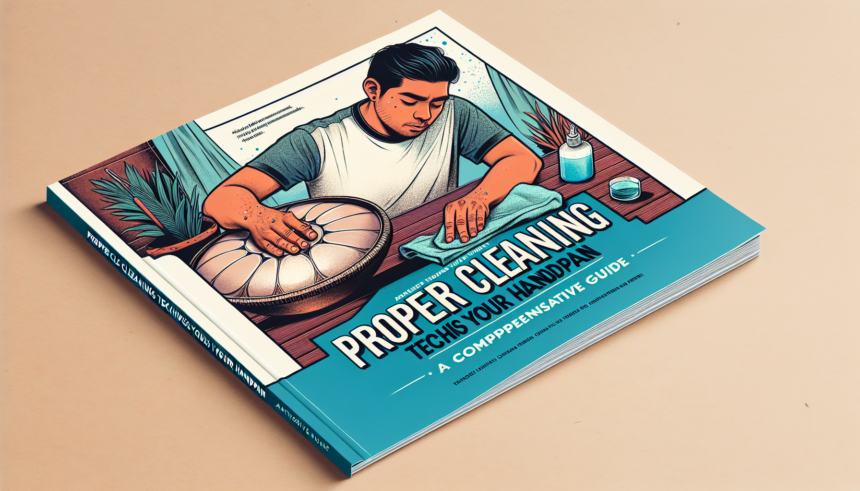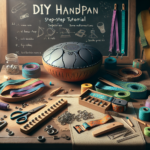Introduction
The handpan is a mesmerizing musical instrument that generates ethereal, melodic sounds. Its unique construction requires proper care to maintain its exquisite tone and appearance. Proper cleaning is essential not only for aesthetic reasons but also to prolong the life of your handpan. This comprehensive guide will walk you through the various cleaning techniques tailored for handpans, ensuring that your instrument remains in pristine condition for years to come.
Understanding the Handpan’s Material
Before diving into the cleaning techniques, it’s crucial to understand the materials used in handpan construction. Most handpans are made from nitrided steel, with some made from stainless steel or raw steel. Each material has its own set of care requirements:
- Nitrided Steel: Known for its durability and resistance to rust. Requires minimal maintenance but benefits from regular cleaning.
- Stainless Steel: Highly resistant to rust and tarnish. Easy to maintain with simple cleaning practices.
- Raw Steel: Prone to rust if not properly maintained. Requires more frequent and diligent cleaning.
Essential Cleaning Tools
Gather the following tools to ensure a thorough and effective cleaning process:
- Microfiber cloths
- Mild soap or handpan-specific cleaning solution
- Isopropyl alcohol
- Protective oil or wax
- Soft-bristled brush
Step-by-Step Cleaning Instructions
1. Preliminary Cleaning
Begin by wiping down your handpan with a dry microfiber cloth to remove surface dust and debris. This step is crucial to prevent scratches during the cleaning process.
2. Gentle Washing
If your handpan has visible dirt or grime, use a damp microfiber cloth with a mild soap solution. Gently wipe the surface, ensuring not to use excessive water. Avoid soaking the handpan, as water can penetrate and cause rusting, especially in raw steel handpans.
3. Cleaning with Isopropyl Alcohol
To remove oils and fingerprints, lightly dab a microfiber cloth with isopropyl alcohol and gently wipe the surface. Isopropyl alcohol evaporates quickly, making it ideal for this purpose. Avoid using harsh chemicals or abrasive cleaners as they can damage the finish.
4. Applying Protective Coating
After cleaning, apply a thin layer of protective oil or wax to the surface. This step is especially vital for raw steel handpans to prevent rust. Handpan-specific oils are available, and alternatives like Ballistol or Frog Lube are effective. Apply using a clean microfiber cloth, ensuring an even coat.
5. Polishing
Once the protective coating is applied, use a fresh microfiber cloth to buff and polish the surface, removing any excess oil or wax. This will give your handpan a beautiful shine and additional protection against oxidation.
Dos and Don’ts of Handpan Cleaning
Dos
- Do: Clean your handpan regularly, especially after use, to prevent the buildup of oils and dirt.
- Do: Use a microfiber cloth to avoid scratches and lint.
- Do: Keep your handpan in a dry, cool place to prevent rusting.
- Do: Apply a protective coating periodically to prolong the life of your handpan.
Don’ts
- Don’t: Use abrasive pads or harsh chemicals that can damage the handpan’s finish.
- Don’t: Submerge your handpan in water as it can cause rusting and damage.
- Don’t: Store your handpan in a damp environment.
- Don’t: Neglect the importance of using specially formulated handpan oils or alternatives like Ballistol.
Storing Your Handpan
Proper storage is equally important as cleaning. Store your handpan in a padded case or protective bag to shield it from physical damage and environmental elements. Ensure the storage area is dry and cool to prevent rusting, and avoid leaving your handpan in direct sunlight for extended periods.
Maintaining the Sound Quality
Over time, even with the best care, the tuning of a handpan may shift. Regular maintenance by a professional tuner is recommended to ensure that your instrument continues to produce its signature sound. In addition, avoid placing heavy objects on your handpan and handle it gently to prevent dents and dings that can affect its tone.
Conclusion
Caring for your handpan through proper cleaning techniques is essential for maintaining its aesthetic appeal and sound quality. By understanding the material of your handpan, using appropriate cleaning tools, and following the step-by-step instructions provided in this guide, you can ensure the longevity and beauty of your instrument. Regular cleaning, protective coating application, and proper storage are key to keeping your handpan in pristine condition. Take the time to care for your handpan, and it will reward you with exquisite music for years to come.
FAQs
1. How often should I clean my handpan?
It is recommended to wipe down your handpan after each use and perform a more thorough cleaning once a month, including applying a protective coating.
2. Can I use household cleaners on my handpan?
No, household cleaners often contain harsh chemicals that can damage the finish of your handpan. Stick to mild soaps or handpan-specific cleaning solutions.
3. What should I do if my handpan gets a dent?
If your handpan gets a dent, it’s best to consult a professional handpan tuner or maker who can assess and repair the damage properly without affecting the sound quality.
4. Can I store my handpan outside?
No, storing your handpan outside can expose it to environmental elements like moisture, direct sunlight, and temperature fluctuations, which can cause damage and rusting.
5. What kind of oil is safe to use on my handpan?
Use handpan-specific oils, or alternatives like Ballistol or Frog Lube. These options are designed to protect metal surfaces without causing harm to your instrument.





